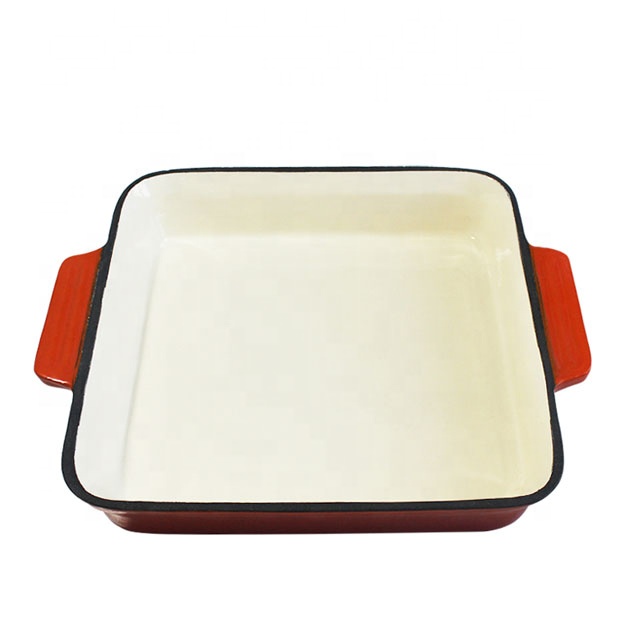
enameled cast iron vs regular
Enameled Cast Iron vs. Regular Cast Iron A Comprehensive Comparison
When it comes to cookware, few materials are as revered as cast iron. Known for its exceptional heat retention and even cooking properties, cast iron has been a kitchen staple for centuries. Among the various options available, enameled cast iron and regular cast iron stand out, each with its own unique characteristics and benefits. This article delves into the differences and advantages of each type, helping you decide which is best suited for your culinary needs.
Enameled Cast Iron
Enameled cast iron is regular cast iron that has been coated with a layer of enamel, providing a glossy, colorful finish. This enamel layer makes the cookware more resistant to rust and eliminates the need for seasoning, which is essential for traditional cast iron. Enameled cast iron is non-reactive, meaning you can safely cook acidic foods such as tomatoes or citrus without worrying about metallic tastes altering your dish.
One of the most significant advantages of enameled cast iron is its aesthetic appeal. Available in a variety of vibrant colors, it can go straight from the oven to the table, allowing for beautiful presentations. Furthermore, the enamel finish makes cleaning much easier; food residues are less likely to stick, and it can often be cleaned in the dishwasher—although hand washing is recommended to preserve the finish.
However, enameled cast iron tends to be heavier and more delicate than regular cast iron. The enamel coating can chip or crack if mishandled, potentially leading to costly repairs or replacement. Additionally, it usually comes with a higher price tag compared to its regular counterpart, which might be a consideration for budget-conscious cooks.
Regular Cast Iron
enameled cast iron vs regular

Regular cast iron cookware, on the other hand, is celebrated for its durability and longevity. With proper care, a well-seasoned cast iron skillet can last for generations. Unlike enameled cast iron, regular cast iron requires seasoning—a process that involves applying a thin layer of oil and heating it to create a natural non-stick surface. This adds a unique flavor profile to dishes, enhancing the taste over time.
One of the primary benefits of regular cast iron is its superior heat retention and distribution. It can withstand high temperatures, making it ideal for frying, baking, and even outdoor cooking. Many chefs prefer regular cast iron for searing meats, as it creates a perfect crust that is hard to achieve with other materials.
However, regular cast iron has its drawbacks. The seasoning process can be time-consuming, and the cookware is reactive; cooking acidic foods can strip the seasoning and impart an unpleasant metallic flavor. Moreover, maintenance requires a bit more effort; it must be carefully cleaned and dried to prevent rusting.
Conclusion
In summary, the choice between enameled cast iron and regular cast iron ultimately depends on your cooking preferences and lifestyle. If you prioritize ease of use, aesthetic appeal, and versatility in cooking different types of food, enameled cast iron may be your best bet. However, if you seek durability, superior heat retention, and the ability to create a unique flavor profile, regular cast iron may be the ideal choice.
Regardless of your choice, both types of cast iron cookware can enhance your culinary experience, allowing you to create delicious meals with remarkable flavor and texture. With proper care and maintenance, either option can serve you well for years to come.
-
New Cast Iron Skillet w/ Removable Wood Handle - Factory LatestNewsJul.25,2025
-
High Quality Kitchen Durable Black Round Cast Iron Cookware Pancake Crepe Pan-Baixiang County Zhongda Machinery Manufacturing Co., Ltd.|Durability,Non-Stick SurfaceNewsJul.22,2025
-
High Quality Cast Iron Cookware-Pan with Wooden Handle|Durable,Non-Stick,Even Heat DistributionNewsJul.21,2025
-
Cast Iron Pancake Crepe Pan-Durable Kitchenware|Non-Stick&Wooden HandleNewsJul.21,2025
-
Cast Iron Pancake Crepe Pan-Durable Kitchenware|Non-Stick&Wooden HandleNewsJul.21,2025
-
Cast Iron Pancake Crepe Pan-Durable Kitchenware|Non-Stick&Wooden HandleNewsJul.21,2025


